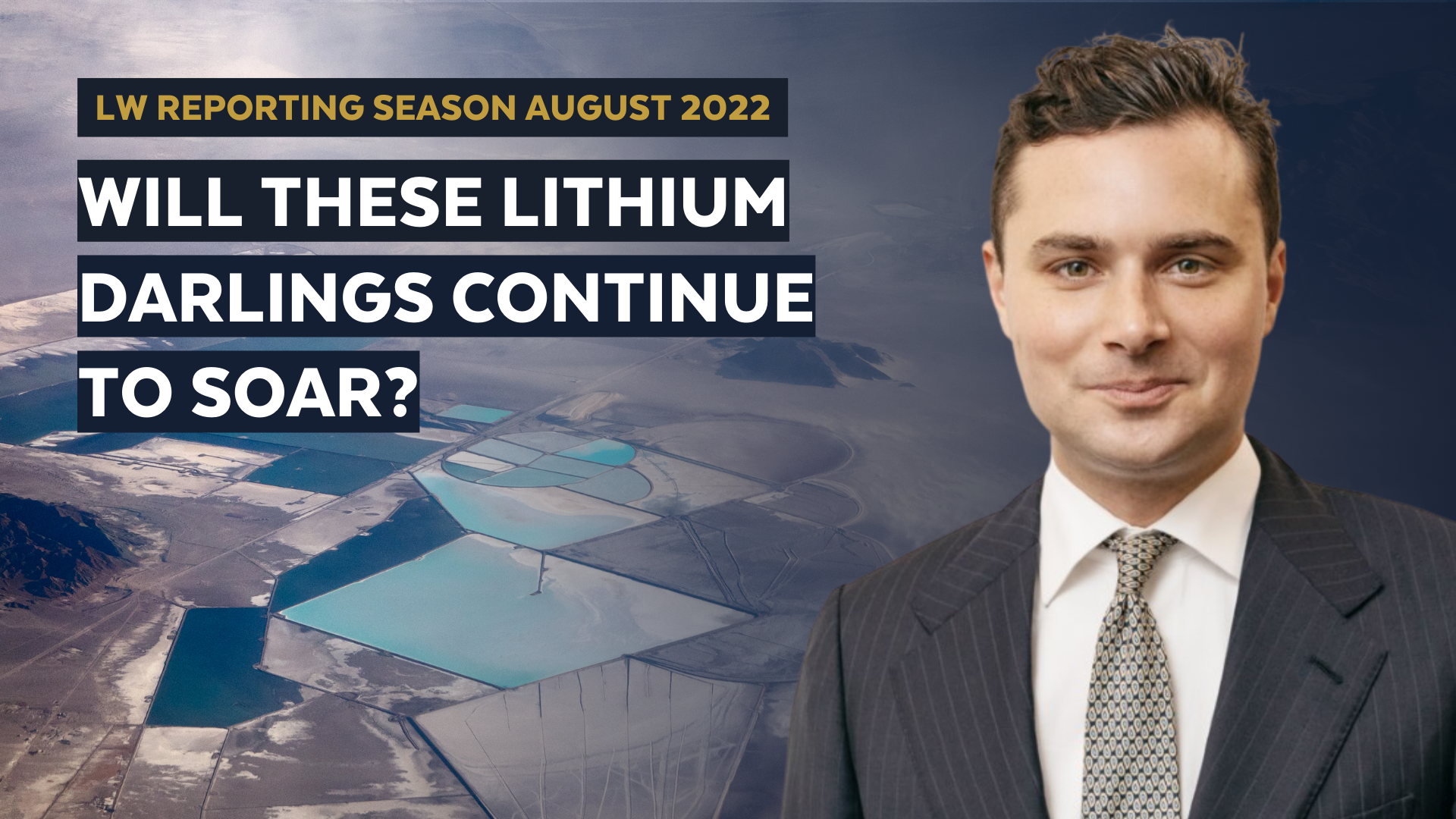Profits soar for these lithium darlings, and there's a hell of a lot more to come
If there is one thing Livewire readers love more than dividends and long-term compounders (and don't get me started on long-term compounders with growing dividends), it's lithium stocks.
Case in point, every Buy Hold Sell that we produce featuring these battery material dazzlers is a flying success, while articles such as Emma Fisher's "The cheapest lithium stock in the market" have been some of the best performers in our history so far.
It makes cents (literally). Over the past year, the price of lithium has soared 343.69%. The only commodity that has outperformed lithium over the past 12 months is European natural gas.
Forecasts for future lithium supply levels vary greatly, but McKinsey expects demand to compound at an annual growth rate of 25% to reach 3.3 million metric tonnes by 2030. In 2021, production exceeded 0.54 million metric tonnes.
And while there are A LOT of lithium stocks available for investors to peruse on the ASX, there are two that have captured investors' attention for all the right reasons: Pilbara Minerals (ASX: PLS) and the relatively new merger that is Allkem (ASX: AKE), formerly Orocobre and Galaxy Resources.
In this wire, Medallion Financial's Michael Wayne provides a detailed rundown of PLS and AKE's latest results, as well as his two cents on why the outlook for lithium prices continues to divide the market.
Pilbara Minerals' key results
- Revenues lifted 577% compared to FY21 to $1.2 billion
- Liquidity/cash on its balance sheet of $874.2 million
- EBITDA of $814.5 million
- NPAT of $561.8 million, up 1192% from FY21 (loss of $51.4 million)
- Costs expected to rise
- FY2023 forecast production of 540-580,000 dmt spodumene concentrate. For FY22, PLS produced 377,902 dmt.
Allkem's key results (formerly Orocobre and Galaxy Resources)
- Revenues lifted 900% to US$770 million (AU$1.1 billion)
- Liquidity/cash on its balance sheet of US$664 million (AU$951.8 million)
- EBITDAIX* of US$513 million, up 12,117% from FY21.
- NPAT of US$337 million (AU$483 million), up from a loss of US$89.5 million in FY21
- FY2023 forecast production of 140-150,000 dmt. In FY22, AKE produced 193,563 dmt from Mt Cattlin. It believes it can triple production by 2026.
* Earnings before interest, tax, depreciation, amortisation, impairment and foreign exchange losses/gains.
.png)
Note: This interview took place on Thursday 25th August 2022. AKE and PLS are held in many of Medallion client's portfolios.
What were the key takeaways from these results? What surprised you the most?
In the case of Pilbara, the full-year results probably disappointed estimates in terms of revenues and earnings. But I think the main surprise was a big increase in costs, which came in at about 10 -11% higher than most of the market's expectations.
There are obvious reasons for that, there's been a lot made of the inflation story at the moment, as well as difficulties in accessing workers, so that was probably the main surprise on the negative.
There was obviously a positive surprise too in the result and that came in the form of PLS upgrading their production expectations for next year. So by and large, we thought the result was good. The company itself has a pretty long runway of growth ahead of it.
In terms of AKE, I think the headline numbers were, at least, better than PLS. They seem to have beaten expectations when it comes to revenue, earnings, as well as margins.
Their costs were slightly higher than PLS, but AKE is probably a bit earlier in its development phase. They don't have as much production as PLS but they've got a lot of assets coming online over the next few years.
I think we could say that both of the results were pretty good. There weren't too many surprises on that front. But it's interesting that both these companies are seeing some incredible prices for lithium at the moment - lithium is at four or five times last year's prices. So if they can continue to ratchet up production, their earnings will continue to grow at a rapid rate.
What was the market’s reaction to these results? Was it an overreaction, an underreaction or appropriate?
I think there's been an appropriate reaction to the actual results themselves. But there's definitely been a strong reaction to that research note coming out from Macquarie.
Would you buy, hold or sell PLS and AKE on the back of these results?
Rating: HOLD (for both)
We've been a holder of AKE for quite some time and we think their long-term prospects are very good. That said, it probably is slightly higher risk than PLS at the moment, just given they have projects coming online anywhere from next year to 2026.
In saying that, for the investor who wants confidence in the here and now, and a company that's delivering great numbers, PLS is probably the safer of the two options. They have one of the biggest individually owned lithium assets in the world and they're producing a lot more than AKE at the moment. Therefore, they're able to capitalise on the high prices that we're seeing at the moment.
Honestly, you could make a case for both PLS and AKE in your portfolio if you have a favourable long-term view of the theme. So we do have clients that have both and we're happy to hold at the moment.
Would I buy PLS and AKE right at this moment? It's hard to say because if you asked me a month or two ago the prices were on a bit of a downward trend, but given the recent pickup in their share prices, both companies are now approaching their all-time highs again.
Counterintuitively, analysts will tell you to buy commodity companies when the PE ratios are high and sell them when the PE ratios are low. If you look at AKE, it is on a PE of around nine times and PLS is on a PE of roughly seven times. Take a look at BHP (ASX: BHP) at the moment, it trades on about seven times earnings. Fortescue Metals (ASX: FMG) at around the same level. That's the market factoring in lower commodity prices into the future and subsequently lower earnings.
What’s your outlook on PLS and AKE and the lithium sector over FY23?
The long-term outlook for lithium is fairly strong. Particularly if countries around the world continue to target net zero by 2050. If you look at the EU, they have a target to increase the number of battery-powered vehicles or electric vehicles from about 10% of new cars produced up to approximately 70% by 2030. That is not that far away, so there's going to be huge increased demand for lithium.
There's also a big drive to increase the storage capacity of the grid, which will require battery power to store energy. That's expected to increase 20 times by 2030. So, there's definitely that long-term theme that is going to drive demand for batteries worldwide.
In fact, battery demand is expected to increase by 18% per annum from now to 2030. So, basically, there's going to be a lot of demand for lithium, and it's whether or not supply can keep up or will supply potentially fall into a deficit.
There are a couple of diverging camps at the moment that investors should be aware of. Only a couple of months ago, Goldman Sachs argued that lithium prices are in for a sharp correction next year. And that's probably what set the share prices back when looking at PLS and AKE going back a few months.
Goldman believes that lithium prices will fall from their current levels, around US$60,000 to about US$16,000 next year, because it believes there's going to be a lot of supply coming online from China. Their forecasts for demand are also lower than what many others predict.
However, Macquarie just came out a couple of days ago with the complete opposite view.
Macquarie's view is that lithium prices will increase by about 55% next year, and then more than double in the years after that, because it believes that there's a huge supply shortage at the moment that's just not keeping pace with demand.
Who you decide to believe will determine your investment case on PLS, AKE and the lithium sector in general.
Are there any risks to PLS and AKE and the sector that investors should be aware of given the current market environment?
The risks for AKE are probably greater than for PLS, just because they have a lot of different assets that they are hoping to bring online around the globe over the next few years. Investors can't jump to conclusions that they can deliver that production capacity - building mines isn't straightforward AND they have to compete for labour resources and battle inflation.
So you could say that in the case of AKE a lot of their value is riding on the expectation that they're able to deliver down the track, so if they should, for whatever reason, fall behind or not deliver as much production as hoped, then there's probably more downside for them.
PLS is probably the less risky investment. They just have the one mine in Western Australia, so you could argue the geopolitical risks are lower than for AKE.
From 1-5, where 1 is cheap and 5 is expensive, how much value are you seeing in the market right now? Are you excited or are you cautious about the market in general?
Rating: 3
On the face of it, you could argue that the ASX looks cheap - the PE ratio at the moment of the ASX is around 13 times earnings, which is below the long-term average of about 15 times or 14.9 times earnings.
But if you start to dig below the surface, the two main sectors in the ASX - the banks and the miners, are both trading on very low multiples and it's dragging the index PE lower. So if you exclude those two major sectors, then the PE of the market comes to 20 times earnings, which by historical standards, is obviously not that cheap at all.
Out of five, I would give it a three. It's certainly not cheap, but it's not as expensive as it was going back 6-12 months ago.
We wouldn't be rushing to jump into the markets and pile heaps of cash into the markets right now. Obviously, you can be very selective about what you look to invest in. But at the moment if we had a preference for businesses, it will be those with short duration cashflows - companies that are making money now and generating positive cash flows right now, as opposed to those high-multiple, high-growth companies.
4 topics
2 stocks mentioned
1 contributor mentioned


